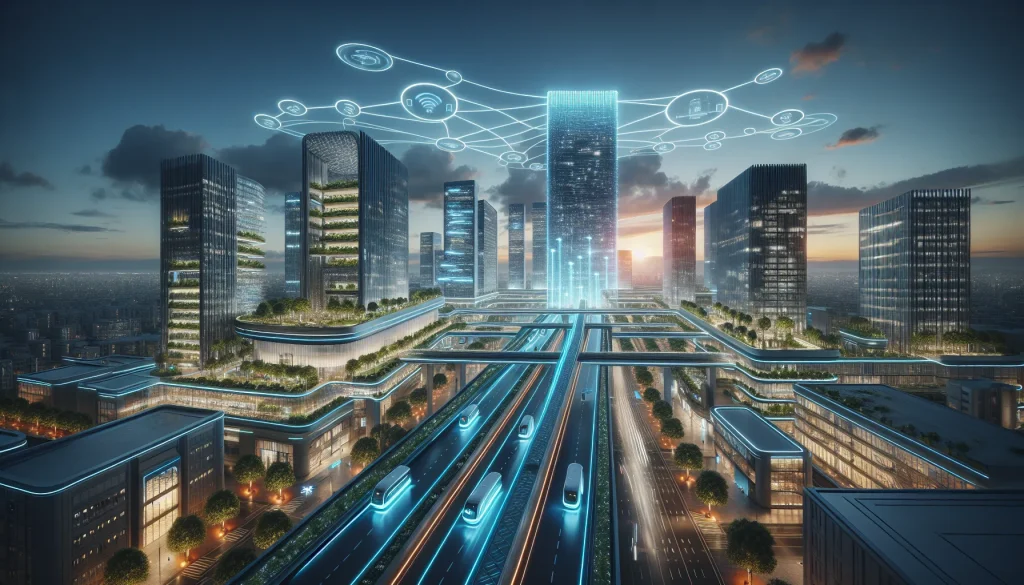Smart infrastructure is revolutionizing cities and industries worldwide. This article presents key insights from leading experts in the field, offering valuable perspectives on stakeholder collaboration, real-time data analytics, workforce development, and system interoperability. Discover the essential elements that contribute to successful smart infrastructure implementation and learn how these innovations are shaping our future.
- Stakeholder Collaboration Drives Smart Infrastructure Success
- Real-Time Data Analytics Optimize Smart Systems
- Skilled Workforce Essential for Smart Infrastructure
- Interoperability Ensures Long-Term Smart Infrastructure Viability
Stakeholder Collaboration Drives Smart Infrastructure Success
One crucial factor I’ve found for the long-term success of smart infrastructure projects is stakeholder collaboration from day one. In my experience, projects that bring together city planners, technology providers, community representatives, and end-users early on create solutions that truly fit local needs and realities. This collaboration prevents costly misalignments later, like deploying technology that doesn’t integrate well or isn’t adopted by the community. For example, in a recent smart lighting project I oversaw, involving residents in the design phase helped us tailor controls for safety and energy savings without sacrificing comfort. When all voices are heard, the project builds trust, adapts to evolving demands, and sustains itself financially and socially over time. Without this inclusive approach, even the most advanced technology risks becoming obsolete or underused.
 Nikita Sherbina
Nikita Sherbina
Co-Founder & CEO, AIScreen
Real-Time Data Analytics Optimize Smart Systems
A critical factor for the long-term success and sustainability of smart infrastructure projects is robust real-time data and analytics. With data, companies can ensure systems like traffic management or energy grids respond dynamically to changing conditions. For example, in a smart city project, adaptive signal timing based on real-time traffic information has led to a 15% reduction in congestion. Analytics can forecast maintenance requirements, for example, targeting a bridge’s structural problems before they worsen and end up costing millions to fix. This process allows the projects to be efficient, cost-effective, and responsive to the local community.
This factor is important because it empowers proactive decision-making to optimize resource utilization and minimize waste. Without data-based insights, projects risk inefficiencies, such as overbuilt systems or delayed responses to failures. In my experience, a smart grid using analytics cut energy waste by 10%, directly lowering costs for residents. By continuously monitoring performance, the government can adjust operations to meet changing needs and guarantee that infrastructure will be relevant and sustainable for decades. Not only is investing in analytics smart, but it’s ultimately necessary to build resilient, future-proof systems.
 Seann Malloy
Seann Malloy
Founder & Managing Partner, Malloy Law Offices
Skilled Workforce Essential for Smart Infrastructure
In my opinion, the development of the correct workforce to maintain smart infrastructure works in the long-term perspective is one of the key aspects of success for smart infrastructure projects. It is something people tend to disregard but has time and again become vital. No matter how sophisticated a smart infrastructure can be, it will still need quality labor, which knows how to operate and maintain the systems once they are operational.
I remember once I attended a project related to water management in one of the medium-sized cities, and they offered a smart approach to water management. It was state-of-the-art technology, but the domestic human resources could not possibly cope with the sophistication of the system. They had to spend more to maintain the system, and the system frequently went down, interrupting services. They needed to play the game of catch-up and invest in their staff training programs. This would not have been the case had they thought about workforce development at an earlier stage.
In cities such as Denver, which have adopted proactive methods in matching vocational education in terms of emerging infrastructure patterns, integration of skilled labor has been rather easy. They collaborated with local trade schools so that their workforce would be able to handle the requirements of changing projects. It made a lot of difference in the low cost and efficiency of the projects being run.
This will not only make the projects sustainable but also help the local economies through the provision of career opportunities which are directly related to the success of these smart infrastructure projects.
 Doug Crawford
Doug Crawford
President and Founder, Best Trade Schools
Interoperability Ensures Long-Term Smart Infrastructure Viability
One factor that is absolutely critical for the long-term success of smart infrastructure is interoperability—essentially, ensuring that all the different systems and technologies can communicate effectively and work together.
This is important because cities and technologies are constantly evolving. If the systems we build today cannot adapt or integrate with new tools in the future, they quickly become outdated—and upgrading them can become extremely expensive. Interoperability helps avoid this issue. It provides cities with the flexibility to grow, improve, and incorporate better solutions over time without starting from scratch.
It also enhances efficiency. When transportation systems, energy grids, and communication networks can share data and coordinate, everything operates more smoothly—from reducing traffic congestion to responding more quickly during emergencies.
In summary, without this kind of compatibility, smart infrastructure risks becoming fragmented and more difficult to manage. However, if we build it to be open and connected from the beginning, it is far more likely to remain useful, cost-effective, and sustainable in the long run.
 Kamlesh Khatri
Kamlesh Khatri
Project Engineer, Woolpert







